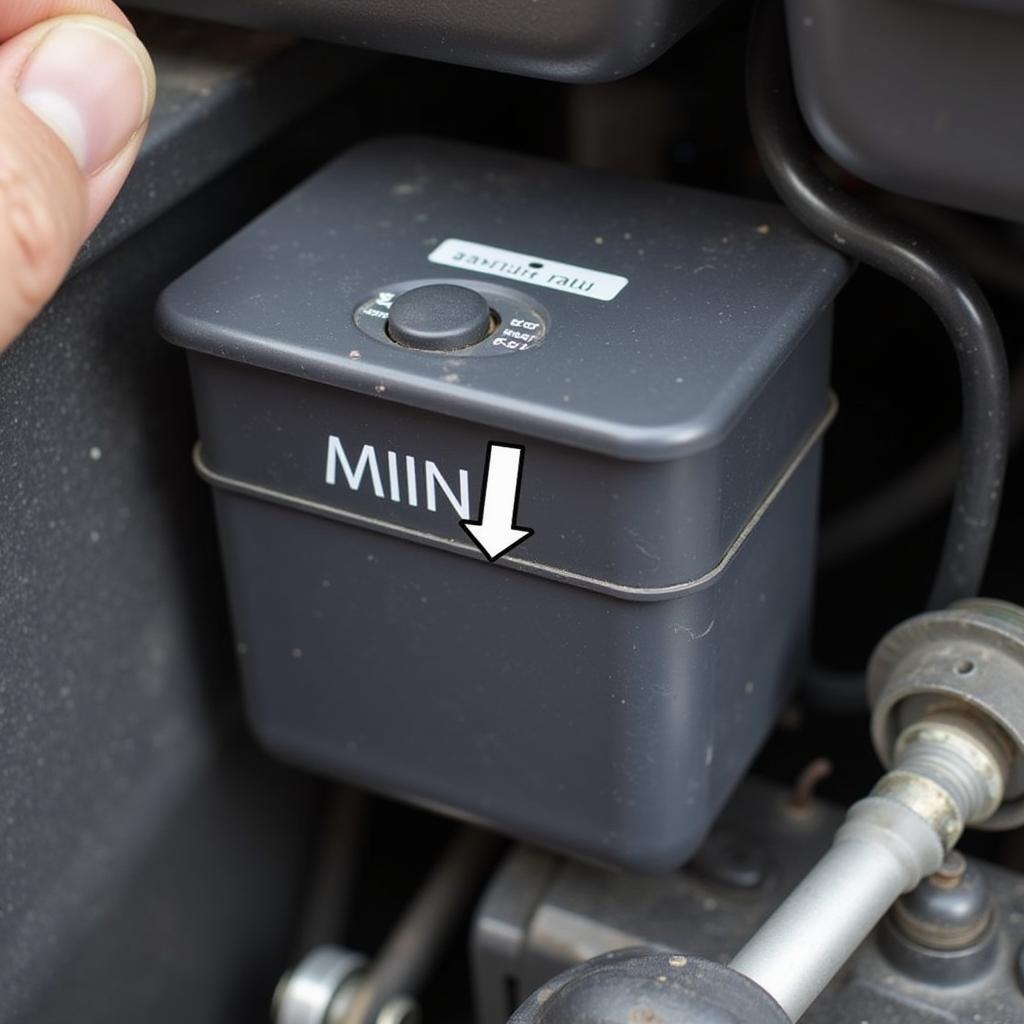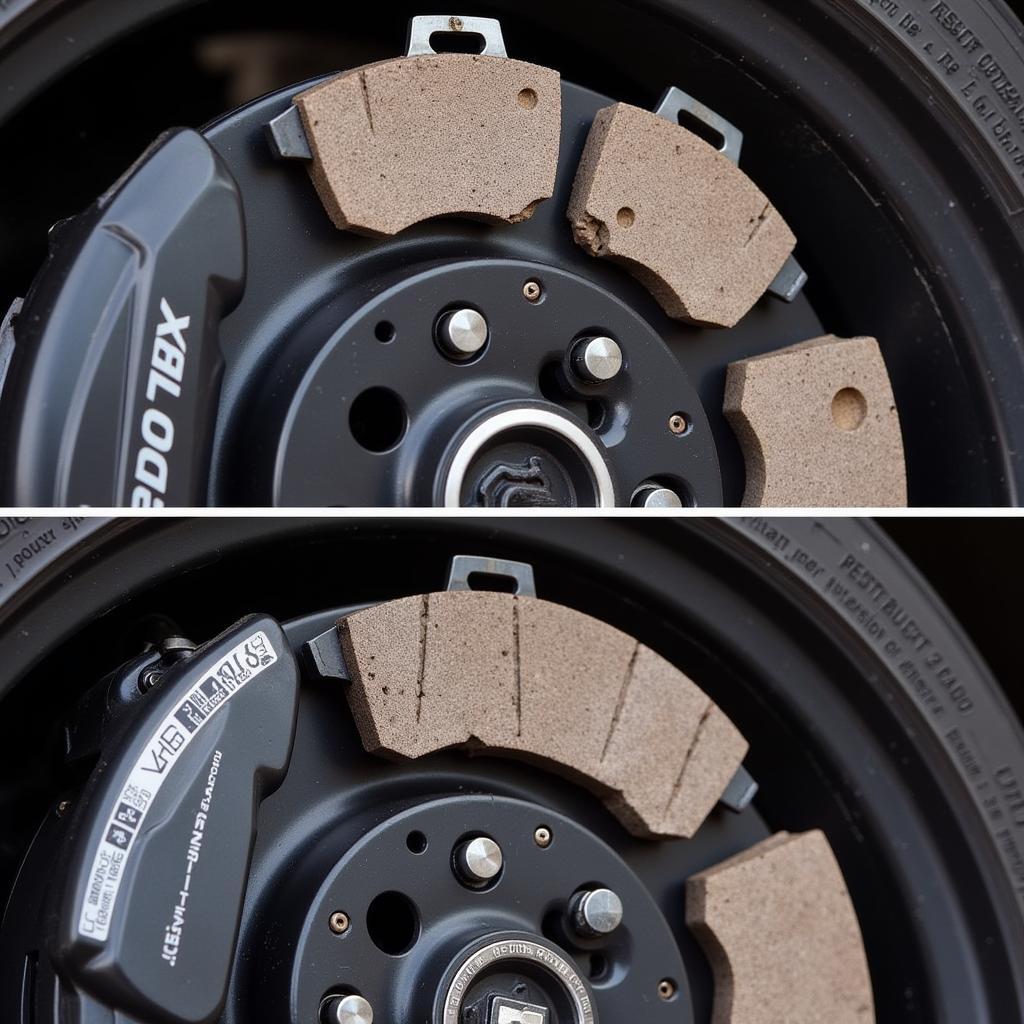Have you ever slammed on your brakes, only to be greeted by a glowing brake light warning on your dashboard? It’s a nerve-wracking experience that can signal a serious problem within your car’s braking system. While several culprits could be at play, understanding the common causes can empower you to take the right steps towards a safe resolution.
Common Causes of a Brake Light Warning When Pressing Hard
1. Worn Brake Pads
This is the most frequent offender. 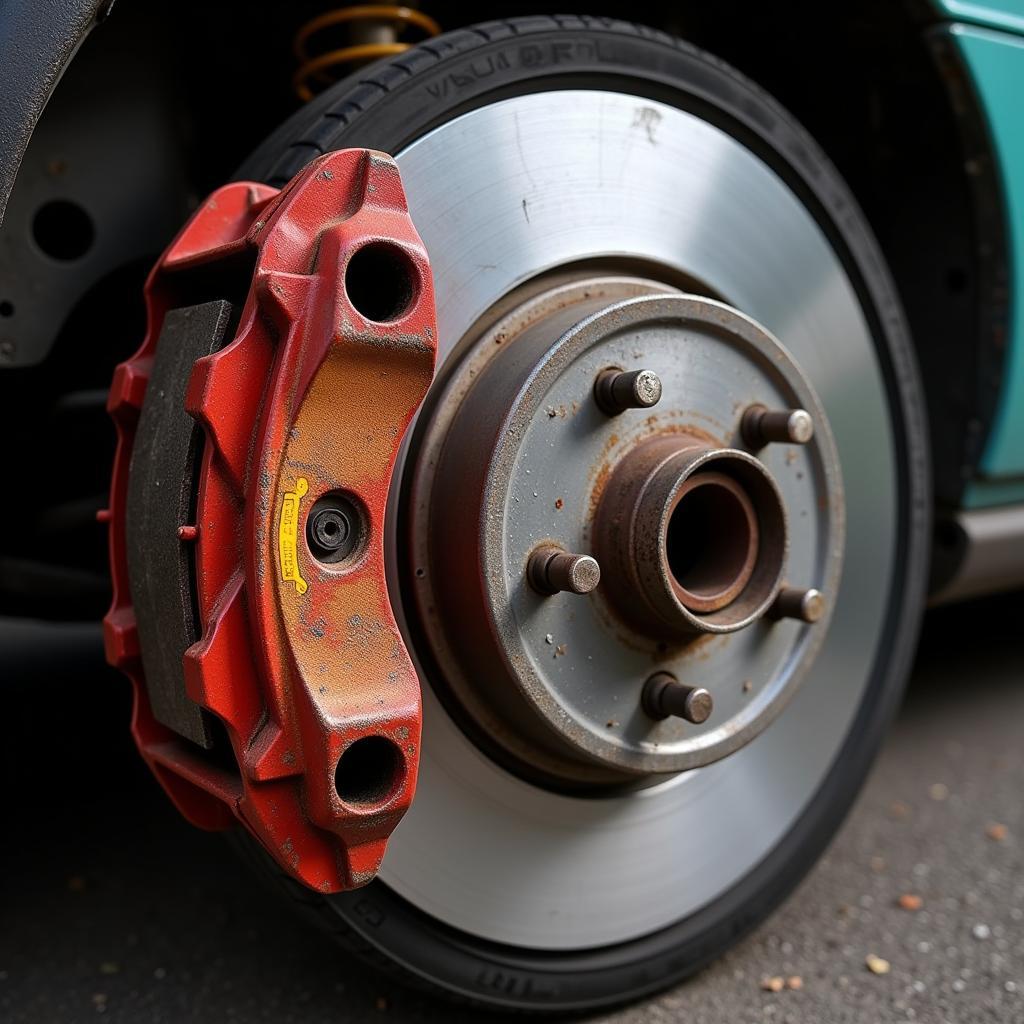 Worn brake pads with wear indicator Brake pads are designed to wear down over time with friction. As they thin out, a small metal tab called a “wear indicator” begins to make contact with the brake rotor. This contact creates a high-pitched squealing sound, often accompanied by the illumination of the brake light warning on your dashboard.
Worn brake pads with wear indicator Brake pads are designed to wear down over time with friction. As they thin out, a small metal tab called a “wear indicator” begins to make contact with the brake rotor. This contact creates a high-pitched squealing sound, often accompanied by the illumination of the brake light warning on your dashboard.
2. Low Brake Fluid Level
Your car’s braking system relies on hydraulic pressure to function correctly. Brake fluid is the lifeblood of this system. If the brake fluid level drops too low, often due to a leak, it can trigger the brake light warning, especially when hard braking. 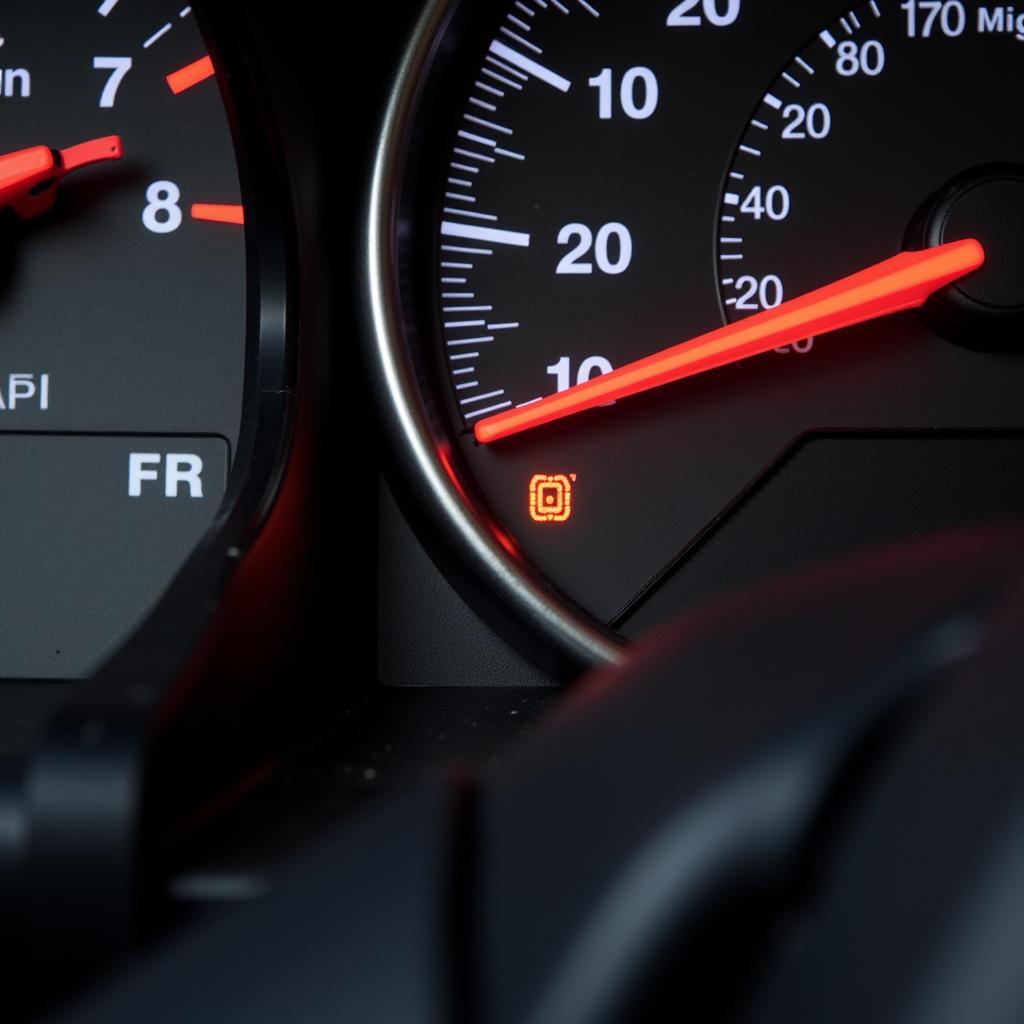 Low brake fluid level in reservoir This is a serious safety concern that requires immediate attention.
Low brake fluid level in reservoir This is a serious safety concern that requires immediate attention.
3. Faulty Brake Light Switch
The brake light switch is a small but vital component that signals your brake lights to illuminate when you press the brake pedal. Over time, this switch can wear out or malfunction, leading to inconsistent brake light behavior. 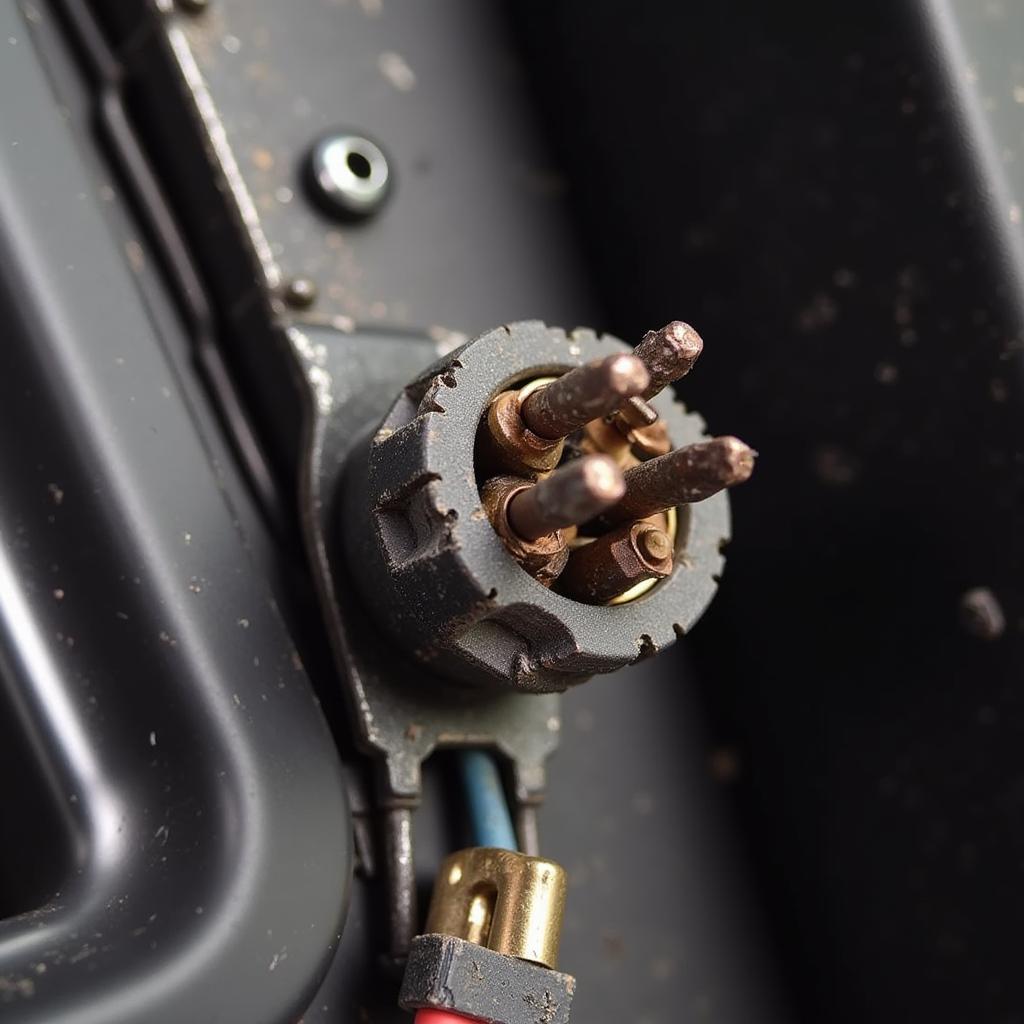 Faulty brake light switch with exposed wiring This might cause the brake light warning to come on even if your brake pads and fluid levels are fine.
Faulty brake light switch with exposed wiring This might cause the brake light warning to come on even if your brake pads and fluid levels are fine.
4. ABS System Issues
Modern cars are often equipped with an Anti-lock Braking System (ABS). This system prevents the wheels from locking up during hard braking, enhancing control and stability. However, if a sensor or component within the ABS malfunctions, it can trigger the brake light warning light. Diagnosing ABS problems often requires specialized diagnostic equipment.
What to Do When Your Brake Light Warning Comes On
“Ignoring a brake warning light is like playing Russian roulette with your safety,” says veteran mechanic John Miller. “It’s always better to err on the side of caution and have it checked immediately.”
Here’s a step-by-step guide:
- Don’t Panic: While the warning light can be alarming, stay calm and safely pull over to a safe location.
- Check Your Brake Fluid: Carefully open the brake fluid reservoir (refer to your owner’s manual for its location). If the fluid level is low, adding more might temporarily solve the issue, but it’s crucial to get the system inspected for leaks immediately.
- Listen for Unusual Noises: A squealing or grinding sound when applying the brakes usually indicates worn brake pads, which require immediate replacement.
- Seek Professional Help: If you’re unsure about the cause or unable to fix it yourself, it’s best to contact a qualified mechanic or dealership. Driving with a brake warning light illuminated is highly unsafe.
Preventing Future Brake Light Warnings
- Regular Brake Inspections: Have your brakes inspected at least once a year or as recommended in your car’s owner’s manual.
- Timely Brake Pad Replacement: Don’t wait for the wear indicator to start squealing.
- Quality Brake Parts: Invest in high-quality brake pads and rotors for optimal performance and longevity.
- Address Leaks Promptly: Any signs of brake fluid leaks should be addressed immediately to prevent further damage and potential safety hazards.
FAQs
Q: Can I drive with the brake light warning on?
A: It’s highly discouraged. Driving with a brake warning light on is dangerous and could lead to brake failure.
Q: How much does it cost to fix a brake light warning?
A: The cost can range from a few dollars for a faulty brake light switch to hundreds or even thousands of dollars for major brake system repairs.
Q: How often should I change my brake fluid?
A: It’s generally recommended to have your brake fluid flushed and replaced every 2-3 years or as recommended by your car manufacturer.
Conclusion
A brake light warning appearing when pressing hard on the pedal is a serious signal that should never be ignored. By understanding the common causes and following the steps outlined above, you can ensure your safety and keep your car in top-notch condition. Remember, when it comes to brakes, early detection and prompt action are key to preventing costly repairs and ensuring your safety on the road.

